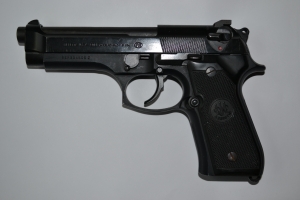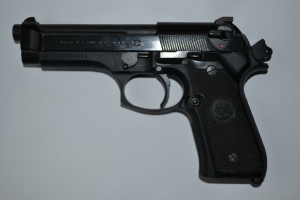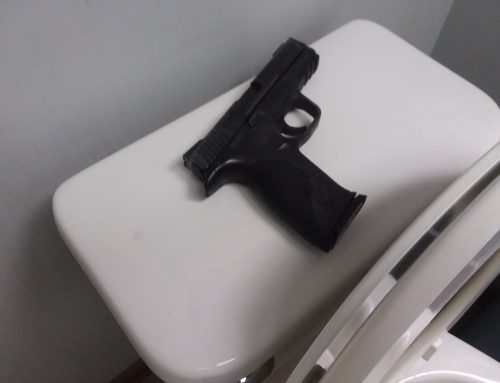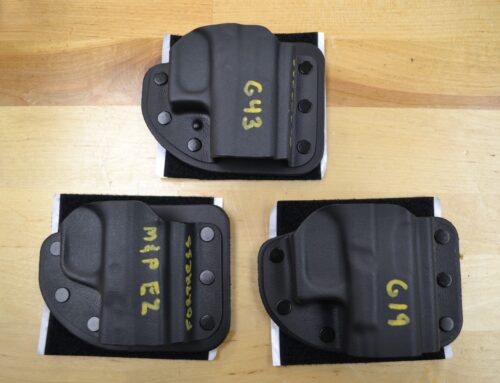“Life is really simple, but we insist on making it complicated.” – Confucius
There are a number of operating systems common to modern pistols, and we still see most on the range regularly. However, 85% of the guns students show up with fall into the polymer, striker fired category. The last 15% are comprised of 1911-style operating systems, a few other rarer designs, the occasional revolver, and those we refer to as “de-cocker” systems.
De-cocker style guns were common during the 70’s, 80’s, and 90’s. S&W, Sig, H&K, Walther, Ruger, among others, produced vast quantities, and with the adaptation of the Beretta 92 by the US Military in 1980, 100’s of thousands of those alone have been produced for military, police, and citizen sales.
De-cocker equipped pistols (generally) have an exposed hammer, and work in this manner:
-The gun is carried with the hammer down. When drawn, the trigger is found in its most forward position, and requires a long, heavy press as it mechanically cocks the hammer for the first shot.
-After the first shot, the slide will cycle and automatically cock the hammer for the next shot, resulting in a shorter, lighter second trigger press. With the first shot, the operator manually cocks the hammer by pressing the trigger, for the following shots, it is cocked automatically by the slide function.
-When firing is complete, the pistol needs to be “de-cocked” in order to render it relatively safe before holstering. To accomplish that, most are equipped with either a lever or button which allows for the hammer to be lowered safely on a loaded chamber.
De-cockers (again, a generalization) are of two designs: Single Stage, and Two Stage.
Single Stage de-cockers work by depressing a lever or button, and due to the mechanism being spring loaded, require no other actions.
Two Stage de-cockers are usually a lever (not a button), and require the initial press down to de-cock, as well as the addition of a manual return of the lever to its starting position in order to re-enable the firing mechanism. Leaving it engaged on most designs results in a dead trigger.
There are variations on the concept, but that’s the basic way most work.

Beretta 92F de-cocked. De-cocking lever is down, requiring manual movement up to re-enable the pistol. In this state, the trigger is dead. On the Beretta, the de-cocking lever doubles as a manual safety.
Where does that leave us?
As every police department in the nation, the vast majority of our students, and now even the US military, have figured out, de-cocker style operating systems are a royal pain in the ass! They offer no tangible safety benefit, and, in fact, create needless safety and training issues.
Once we explain the ins-and-outs of it to students, we’re often sarcastically asked: Who came up with this, and why would they think this is a good idea?
Here’s what I’ve been able to find out:
The Polish wz. 35 Vis
Now, the big question – why?
My best guess:
As Browning’s 1911 and Hi Power designs were starting to become popular, other manufacturers, in a bid to compete, decided to start producing auto loading pistols.
The Polish Army needed a new pistol, and in 1935 Wilniewczyc and Skrzypiński submitted the design they had been cooking up over the past 4 to 5 years. However, while designing it, they had patent issues to consider, and I think that’s what’s really behind what they came up with.
Browning was working on the Hi Power for FN (Fabrique Nationale) in the early 20’s. He’d sold the patent rights on the 1911 to Colt, and they weren’t due to expire till 1928. He was granted a patent for the Hi Power in 1923 – the Hi Power being his own bid to work around the patents of the 1911 which he no longer owned.
The 1911 and Hi Power both use the single action/double action, “cocked and locked” style mechanism, and we’re quickly becoming the most popular auto loading pistols of the day. In 1931 when the Radom appeared, the 1911 patents had expired, but the Hi Power patents were still in place.
Manufacturers wishing to compete needed something that would resemble that operating system, yet remain marketable and lawsuit free. Thus, the idea of “first press cocks the hammer, slide does the rest” was born. Of course, if one eliminates the “cocked and locked” aspect, a new problem arises – how do we get that hammer down without having an accident? Again, pure speculation on my part, but I’d venture to say that was probably only considered after the first accident with a prototype, or as an “safety improvement” to convert revolver shooters. Who knows?
What we do know is that after the Radom was adopted by the Polish Army FN assisted them with establishing a factory to produce it – so, the patents would probably have never been an issue.
Again, this is all pure speculation on my part, and perhaps some gun guru out there can produce a better lesson for us…
In the end, the history is academic and not important to our lives. What is important is understanding that these creatures exist and are not going away, therefore, we need to know how to run them!
With two different trigger positions and two different trigger weights, de-cocker equipped pistols require training and practice to master. Whether you own one, or not, a true operator will possess the skills. Come to class and we’ll bring you up to speed!
Quit looking for an excuse to lose. Find a way to win! – John Farnam








Leave A Comment
You must be logged in to post a comment.